Physical Address
304 North Cardinal St.
Dorchester Center, MA 02124
The authors wish to thank those who wrote the previous text versions and the following individuals for their contributions to this chapter: Meagan Costedio, MD; enterostomal therapists Coleen Potts, RN, Susan Booth, RN, and Jeanette Gatan, RN; Lisa Rhome, RN; and the patients who inspire us every day.
The creation of a stoma in the pediatric patient requires careful consideration of the associated risks and benefits. Children and adolescents grow and function differently compared to adults, and they often need the help of others when managing a stoma. Stoma care involves a multidisciplinary approach, and these patients require observant follow-up and evaluation for the early recognition of stoma-related complications.
Intestinal stomas are indicated for a wide variety of surgical pathologies. The first documented stoma in the pediatric population was in 1783 when a colostomy was created for a patient with anal atresia. In 1793, Duret used a colostomy for an infant with imperforate anus who survived for 45 years after the operation. These index cases represent the use of intestinal stomas to relieve distal bowel obstruction. Currently, stomas are created for various other purposes, including for enteral feeding and for the administration of colonic enemas to treat refractory constipation. It is helpful to classify intestinal stomas in terms of their anatomical locations and their functions.
Three common indications for the creation of an ileostomy are to relieve distal obstruction, to divert feces to allow for distal healing, and to provide an outlet in the absence of distal bowel. Distal obstruction can result from mechanical problems such as congenital atresia or meconium ileus, or from functional abnormalities such as necrotizing enterocolitis (NEC) or Hirschsprung disease. , When the distal colon has been entirely removed due to ulcerative colitis or familial adenomatous polyposis coli, options include an end ileostomy or the formation of an ileo-anal pouch with a proximal diverting loop ileostomy to protect the anastomosis during healing. Ileostomy and mucous fistula formation can be used in patients with Crohn disease refractory to medical management who are on antibody to tumor necrosis factor (TNF)-α, antibody to interleukin (IL) 12/23 agents, or integrin antagonists, high-dose steroids, and/or with peritoneal abscesses. Patients with refractory Crohn colitis can also be managed with a total colectomy or a diverting loop ileostomy.
Selection of the ileostomy site, as with all intestinal stoma sites, is extremely important, especially if the stoma will be permanent. Complications including fistula formation, stoma leakage, skin irritation, and difficulty wearing and managing an appliance can be avoided with judicious preoperative site selection ( Fig. 59.1A and B ). Most surgeons will create an ileostomy through the rectus muscle to minimize the risk of parastomal herniation. Care should be taken to avoid placement too near the umbilicus, abdominal scars, or bony prominences. A template or other standard appliance should be attached to the skin so that the position can be checked with the patient in the supine, sitting, and standing positions. The patient should also note the location of the belt line so that the ileostomy can be placed above or below this level. Finally, depending on the level of functioning and independence, the patient should practice accessing the appliance to make sure that he or she will be able to empty and change it as needed.
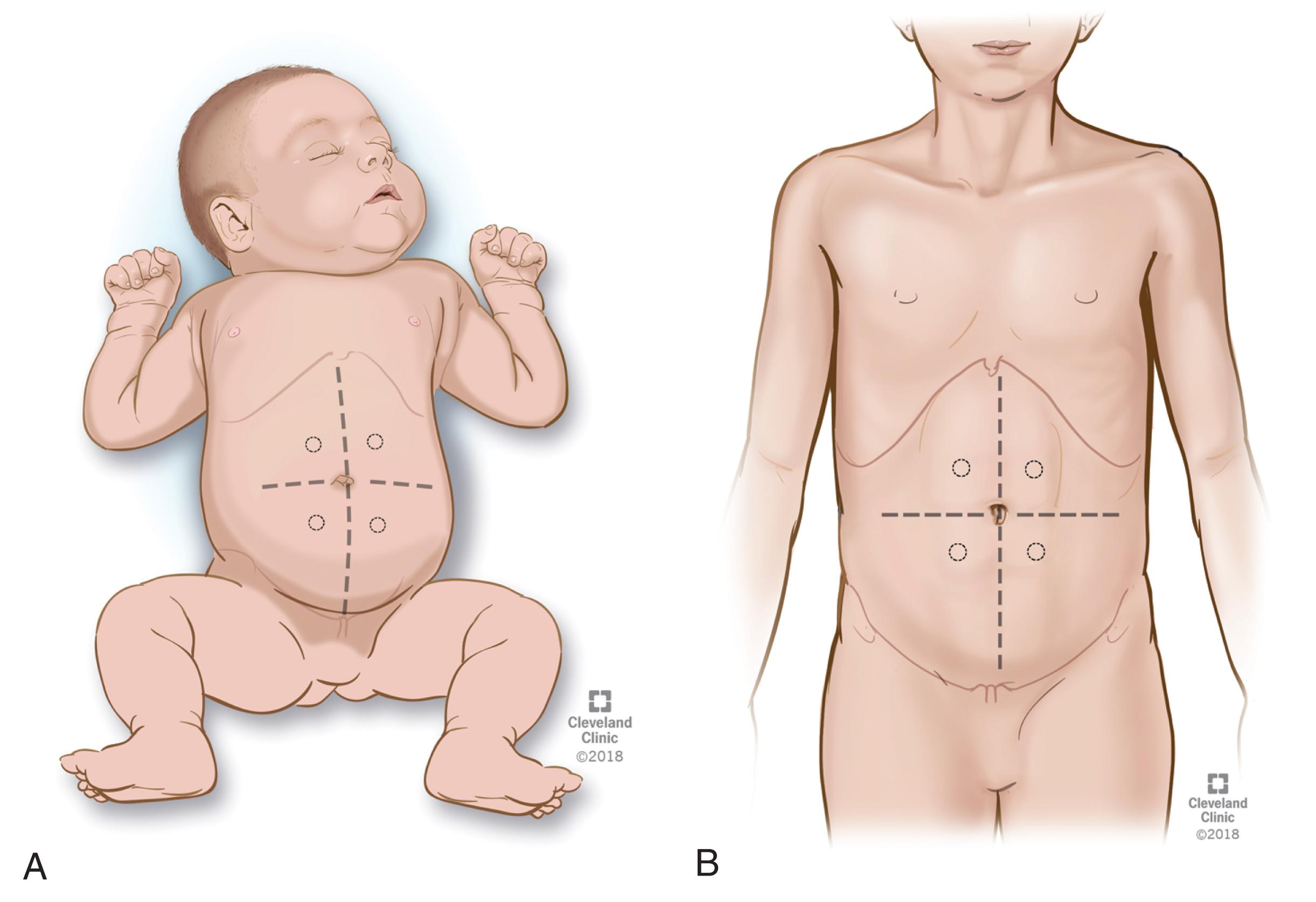
In younger patients, the ileostomy is commonly brought through the same transverse right lower quadrant incision used for the main procedure. For older children, a separate incision is generally used for the stoma aperture. The bowel is exteriorized 2 to 3 cm above the level of the skin when fashioning an end ileostomy in an adult-sized patient, and the abdominal wall aperture should accommodate approximately two fingerbreadths ( Figs. 59.2 and 59.3 ). A proportionally shorter length of bowel is exteriorized in younger patients, and the path through the abdominal wall should be narrower. The bowel should be assessed for viability, and proper orientation of the mesentery should be verified. Suture marking of proximal and distal limbs can be helpful to ensure that the correct bowel limb has been selected for the stoma. The manner in which the ileostomy is secured to the skin is at the discretion of the operating surgeon. Especially in young children, fewer sutures are used to secure the stoma to the abdominal wall compared to adults to avoid compromising the blood supply. Furthermore, placing full-thickness sutures can lead to fistula formation. Eversion of the exteriorized bowel is not essential in neonates and young children. For both loop and end ileostomies, the bowel will evert spontaneously within the first few days or weeks postoperatively (see Figs. 59.3 and 59.4 ). , There is general consensus that the skin sutures should be through the subcuticular tissue and not the epidermis to prevent mucosal skin implants that can secrete mucous and interfere with the seal of the stoma appliance. When fashioning a loop ileostomy or colostomy, a plastic stoma rod or red rubber catheter can be placed though the mesentery adjacent to the serosa at the skin surface and left in place for several days to prevent retraction ( Figs. 59.5 and 59.6 ).
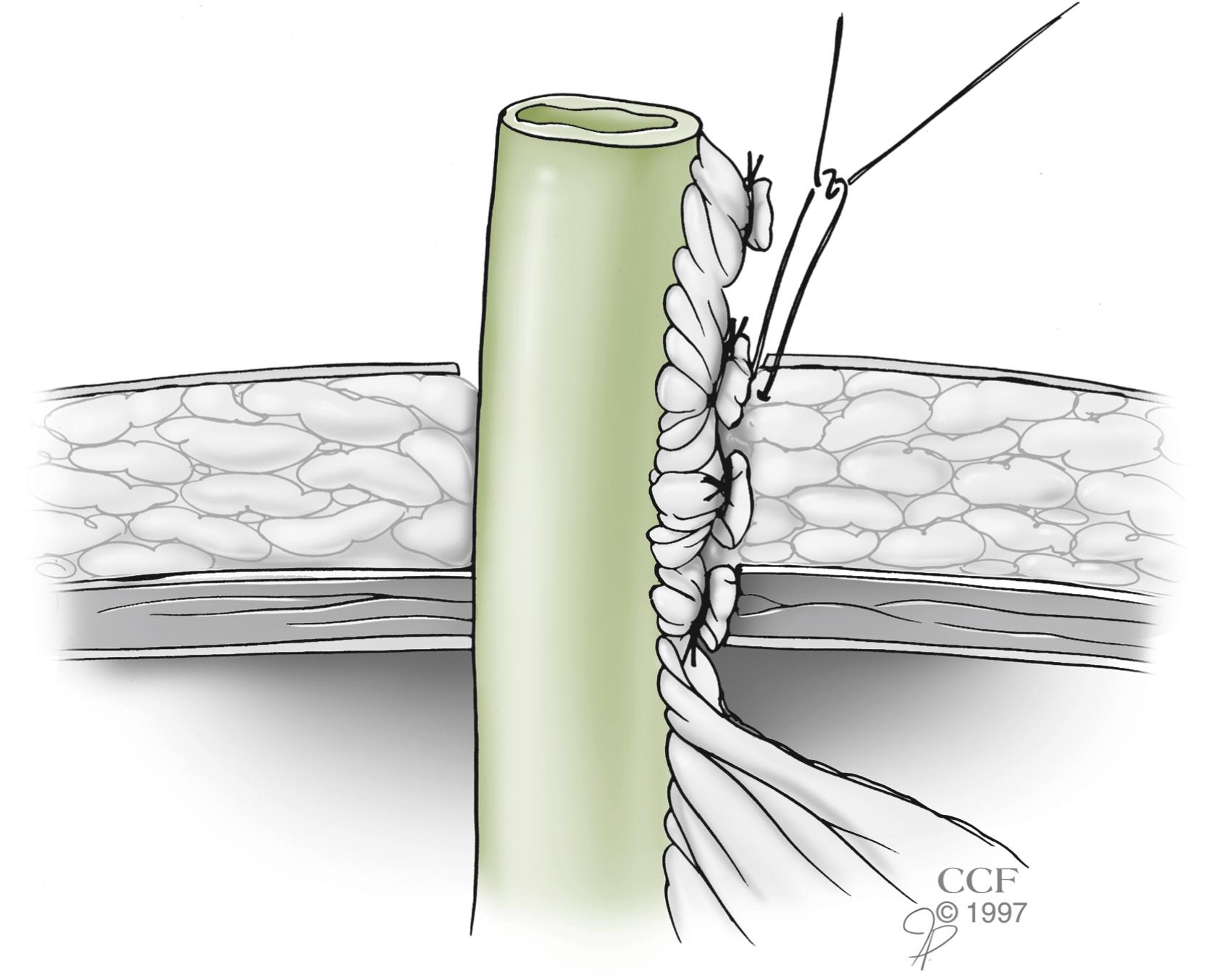
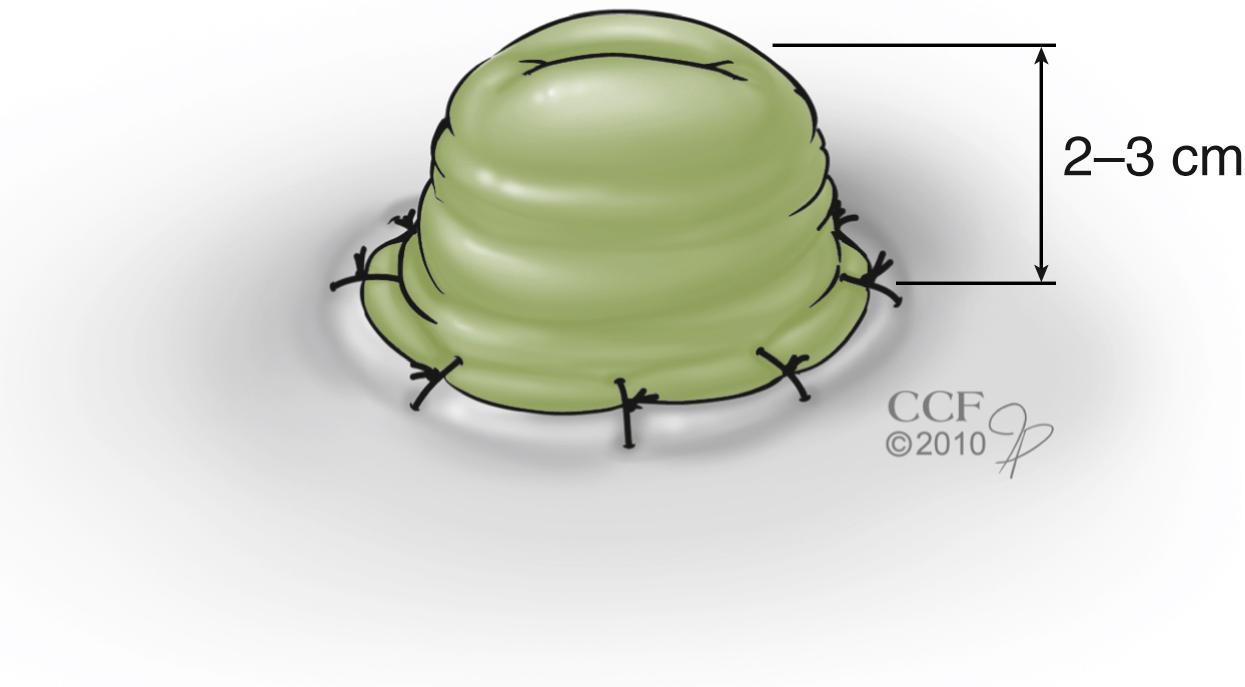
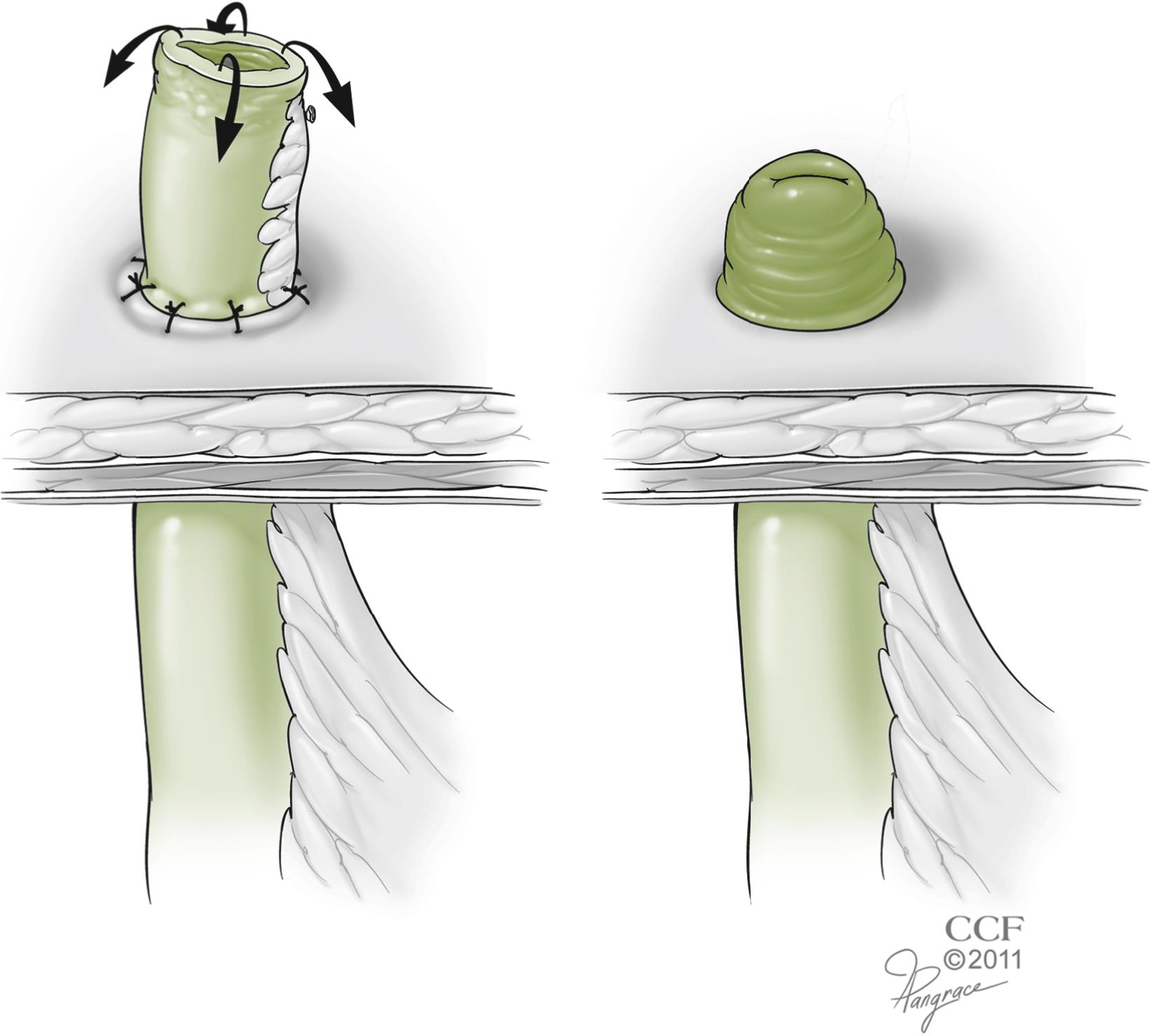
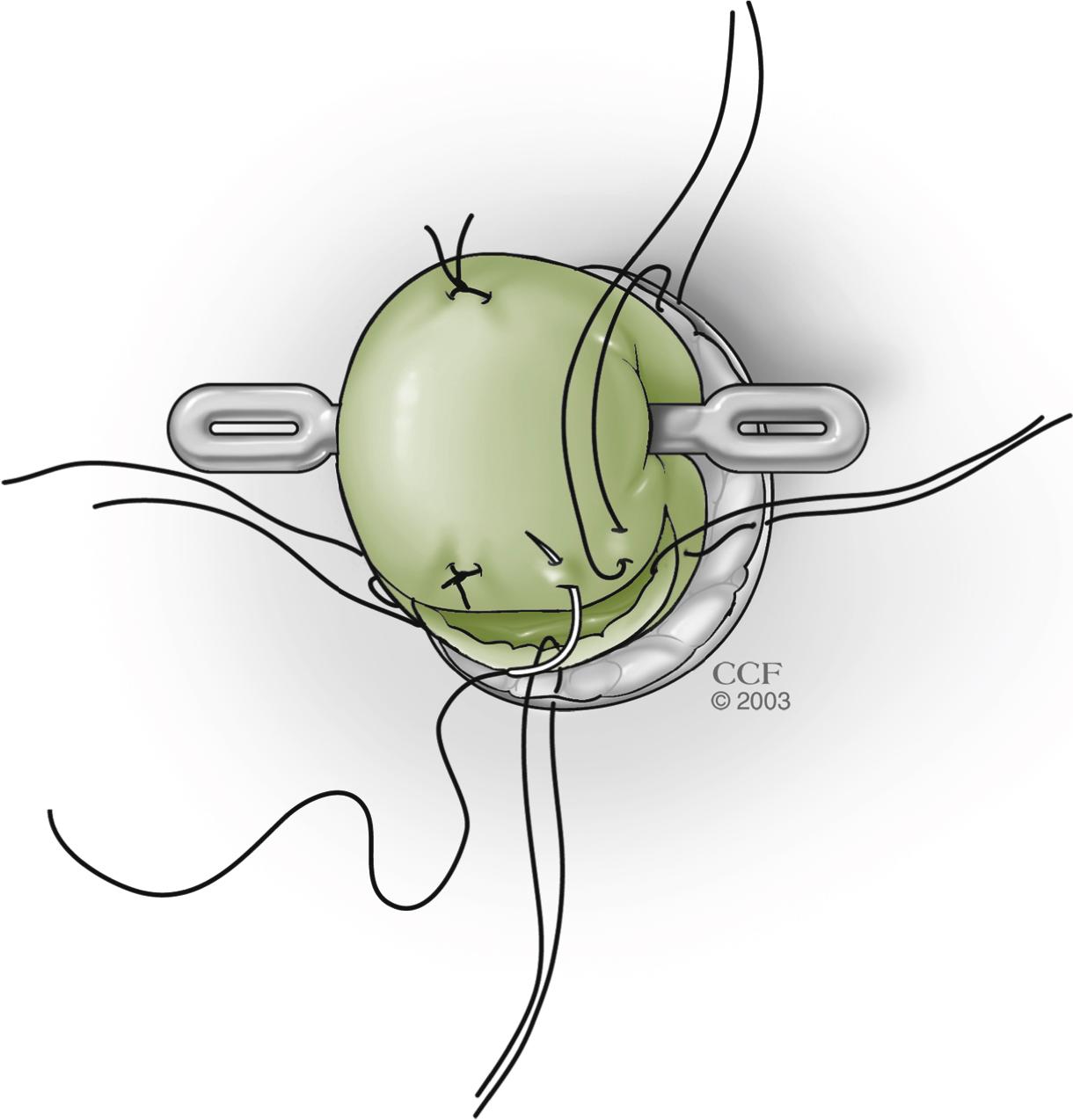
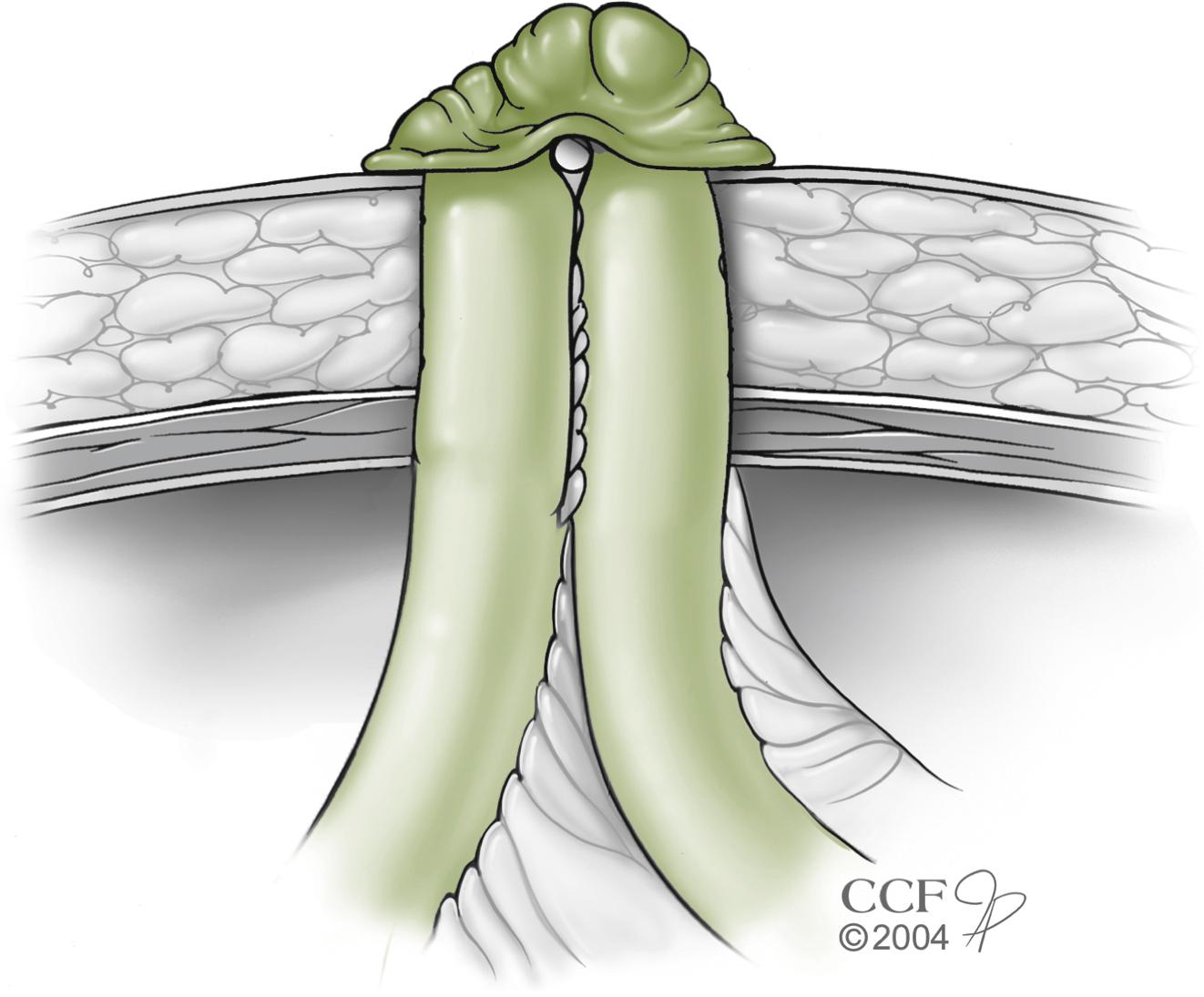
Bishop-Koop or Santulli ileostomies ( Figs. 59.7 and 59.8 ) have been used to treat neonates with conditions including complicated congenital intestinal atresia, complex short bowel syndrome, and meconium ileus. Both of these chimney-type ileostomies provide a decompressive outlet for the proximal small intestine while maintaining access for tube irrigation of the downstream bowel. A T-tube ileostomy may be a safe and effective alternative for irrigation in cases of meconium ileus. This procedure involves creation of an ileal tube enterostomy through which bowel irrigation can continue.
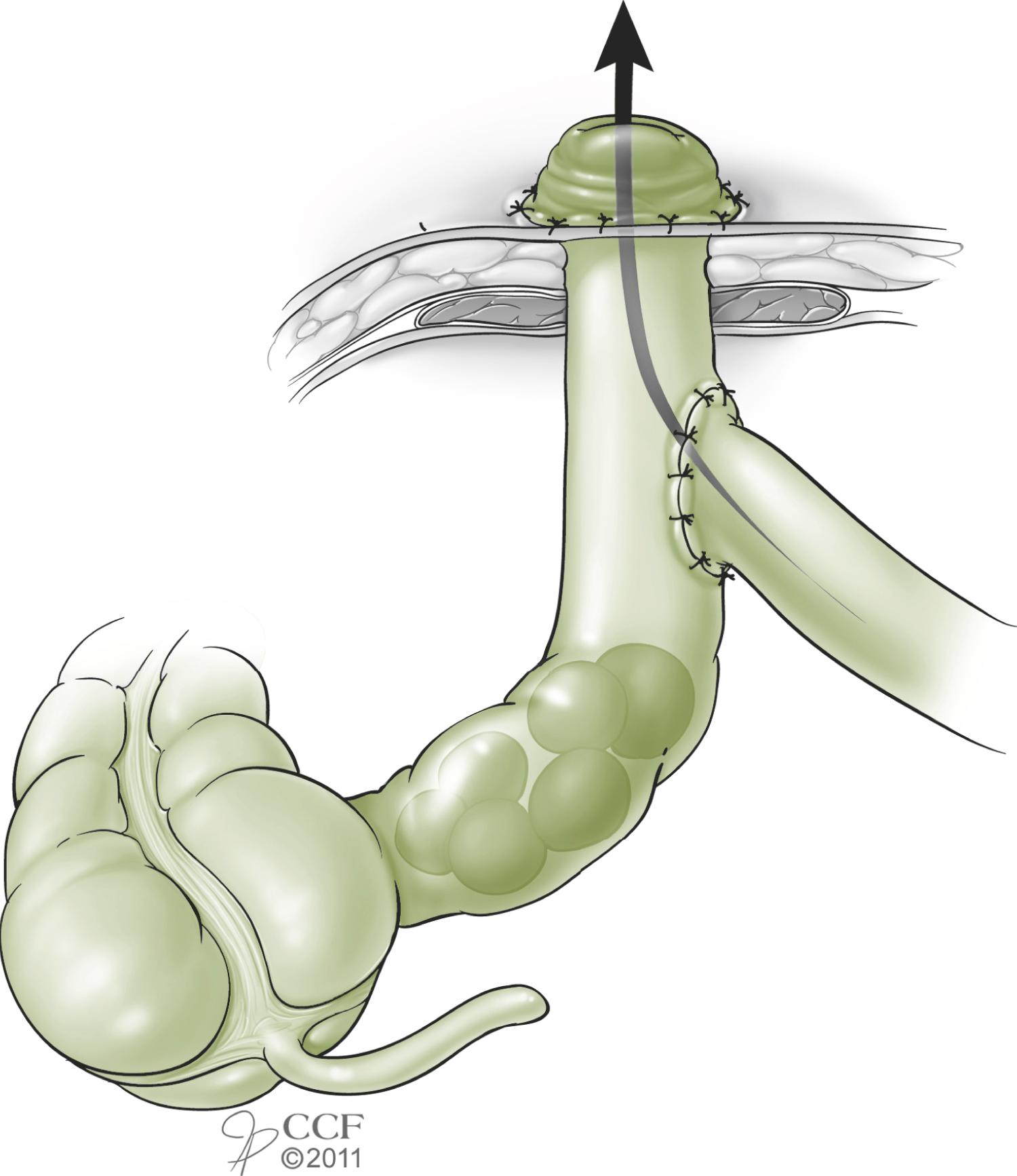
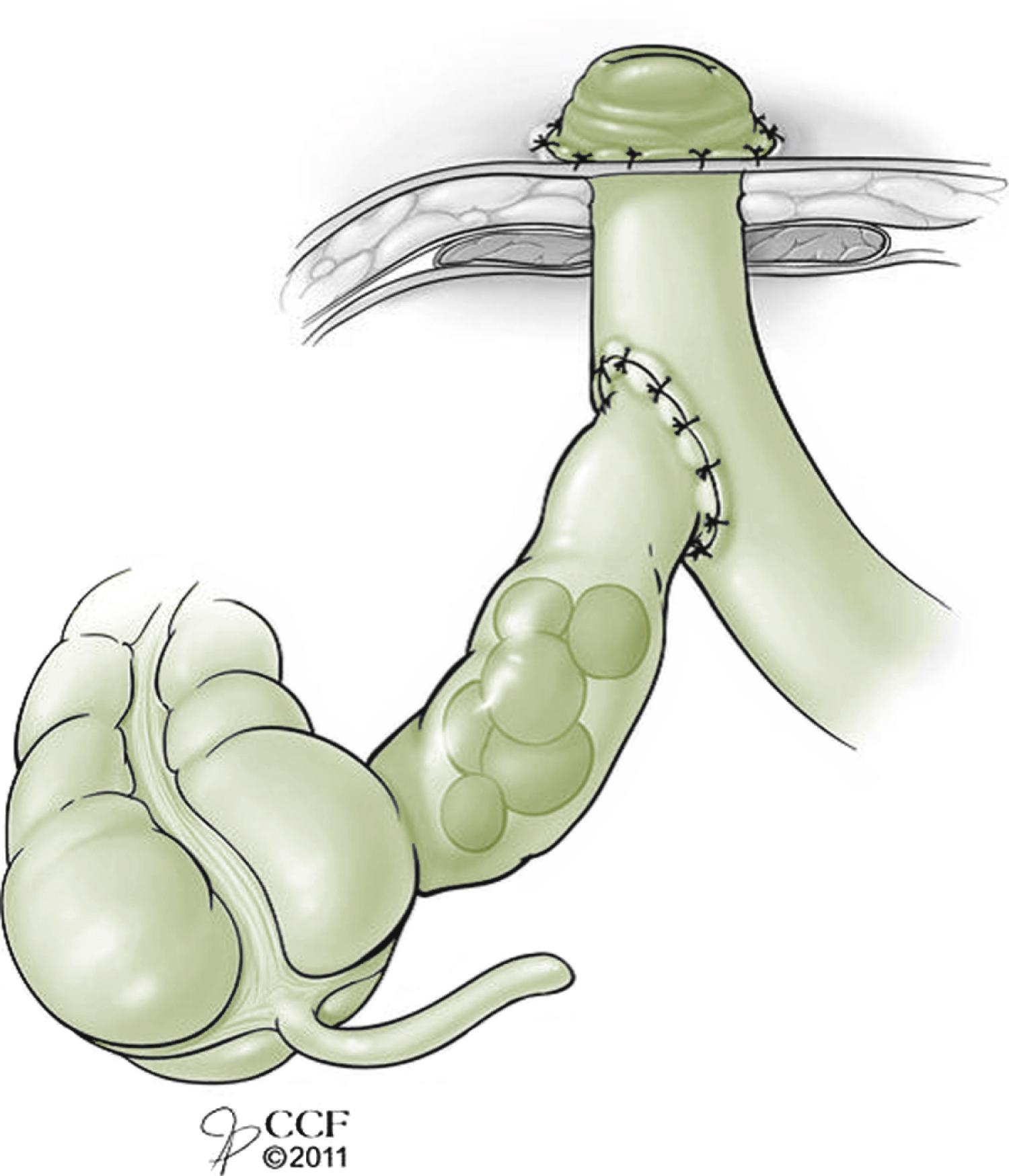
A novel method for closure of a loop ileostomy proposes a magnetic compression anastomosis (magnamosis) using self-aligning magnetic Harrison rings. This minimally invasive technique reduces tissue dissection and surgical handling of the stoma, with one group reporting successful initiation of enteral feeding and good functionality of the bowel in the early postoperative period. This procedure may have particular use in patients who may be otherwise unable to return safely to the operating room for formal ileostomy closure. The advent of single port laparoscopic surgery has created new techniques surrounding stoma formation. Favorable outcomes were reported for pediatric patients with refractory Crohn colitis who were managed with single incision ileocecectomy and bowel re-anastomosis, including reduced length of stay and blood loss. For surgery where a stoma may be required, for example total proctocolectomy with ileal pouch-anal anastomosis and diverting loop ileostomy, the single port site can function as the stoma location and minimize incisions and subsequent scarring. This advantage is particularly beneficial for patients with a need for multiple abdominal surgeries such as patients with Crohn disease, where the stoma can be fashioned through a single incision away from the site of previous surgeries and therefore avoiding sites of intraperitoneal adhesions. Operating time has been shown to be comparable to conventional laparoscopy for most single-site procedures.
Become a Clinical Tree membership for Full access and enjoy Unlimited articles
If you are a member. Log in here